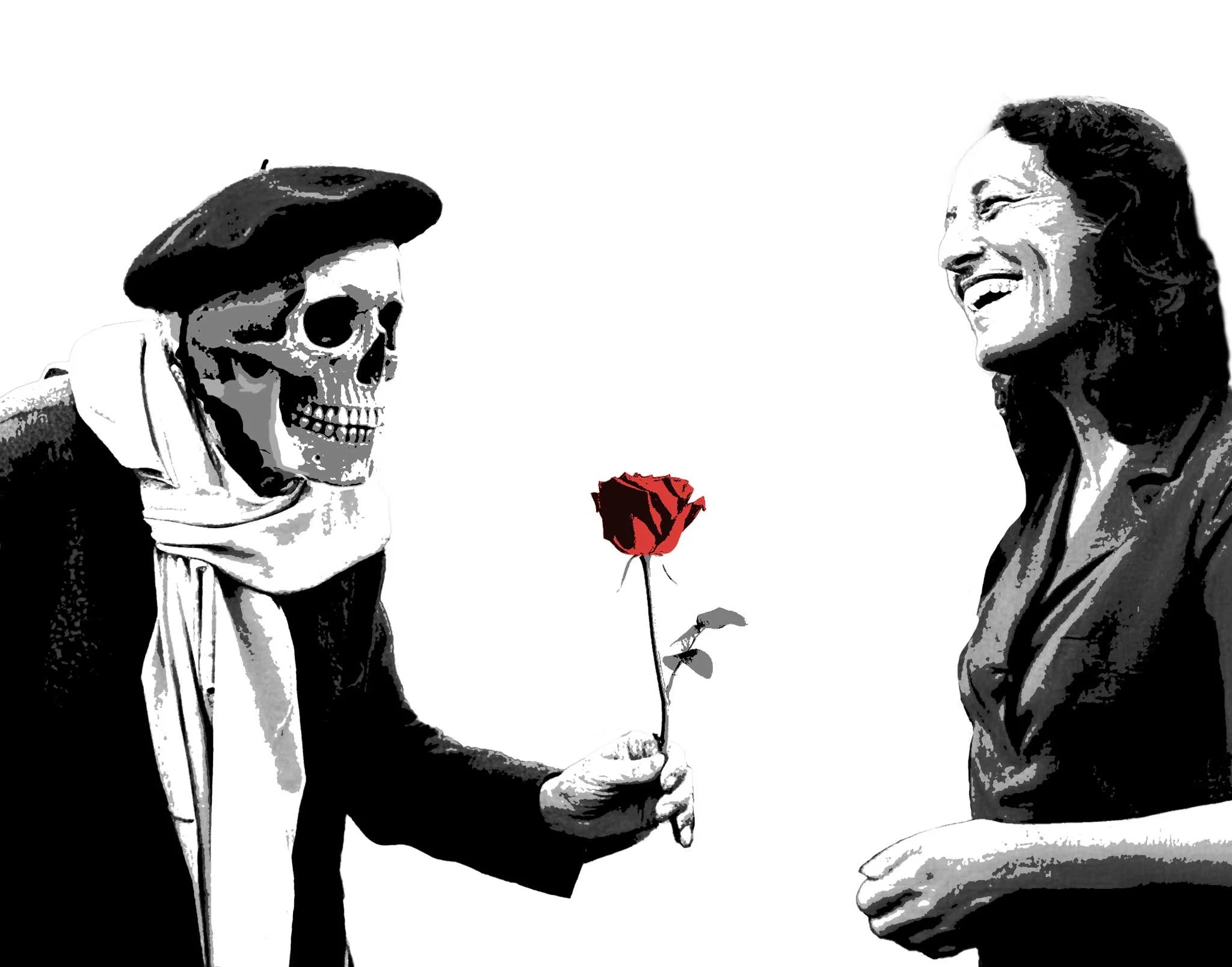Dancing with Death
Five Poets and the Mystery of Being
“Death offers a rose, life smiles back, and the dance begins”
October has a way of reminding us of our mortality. The days grow shorter, the light becomes golden, and the air takes on a hint of decay. At Halloween we see costumes, decorations, and candy, but underneath it all lies a more serious thought: one day, we too will die. It’s a painful thought and it’s easier to push it away than it is to more closer to it. Fortunately, poetry offers us a way to think about death and gain new insight.
The Italian poet Giuseppe Ungaretti had a way distilling big ideas into a few words. His poem “Eternity” encompasses all of life in only three lines:
Between a flower picked
and the other given
the inexpressible nothing.
Between one act and the next, between giving and taking, life passes. The “inexpressible nothing” is not an emptiness but an all encompassing awareness of the gestures which make up our lives.
From Ungaretti's stillness and contemplation, we turn to motion. In his poem “Danse macabre,” the French poet Charles Baudelaire describes a ballroom filled with skeletons and perfume. A woman, long dead, twirls in the candlelight, her “deep-set eyes made of void and gloom.” Although she’s dead, she dances as if she were alive. Baudelaire’s vision is a sharp, playful reminder: no matter how fine our clothes or elegant our gestures, we all move towards the same end. The poem suggests that beauty and decay accompany us in the dance of life.
Emily Dickinson leads us inward, where the dance becomes psychological. In her poem “I Felt a Funeral, in my Brain” she describes a ceremony taking place inside her own mind. The mourners tread, the drum beats, the “Plank in Reason” breaks and suddenly she is falling, endlessly, through her own mind. Dickinson reminds us that mortality isn’t just the loss of the body. It’s the moment when reason itself breaks. Her poem shows a journey from thought into mystery, from knowing into unknowing.
Edgar Allan Poe brings that mystery into the midnight hour. In his poem “The Raven,” a grieving man confronts the echo of his own despair. The bird’s relentless “Nevermore” becomes a kind of haunting reminder of grief and loss. But the poem isn’t only about loss. It’s also about a refusal to stop asking, to stop struggling, to stop enduring. The raven is both messenger and mirror, showing us the shadow that grief casts across the human heart.
Centuries before all of these poets, John Donne looked death in the face and laughed. His poem “Death Be Not Proud” issues a challenge:
Death, be not proud, though some have called thee
Mighty and dreadful, for thou art not so
Donne’s faith led him to look death in the face and taunt it. He refused to grant death the power it claims. In his poem, he compares death to sleep and says after our “one short sleepe,” we “wake eternally.” Donne flips death on its head: instead of death being an ending, it's a beginning. It’s not we who die, but death itself.
Together, these poets invite us to look beyond our fears. Ungaretti finds eternity in a moment’s pause. Baudelaire turns decay into beauty. Dickinson listens as reason breaks apart. Poe turns grief into art. Donne sees death as a doorway to eternity.
In my book Wishing To Be Human, the final two poems linger in a space between being and nothingness. They consider eternity, beauty, and loss. The poems ask, as each of these poets do, what it means to be alive knowing that we will grow old and face death. The answer isn’t denying the reality, but in embracing our humanity.

